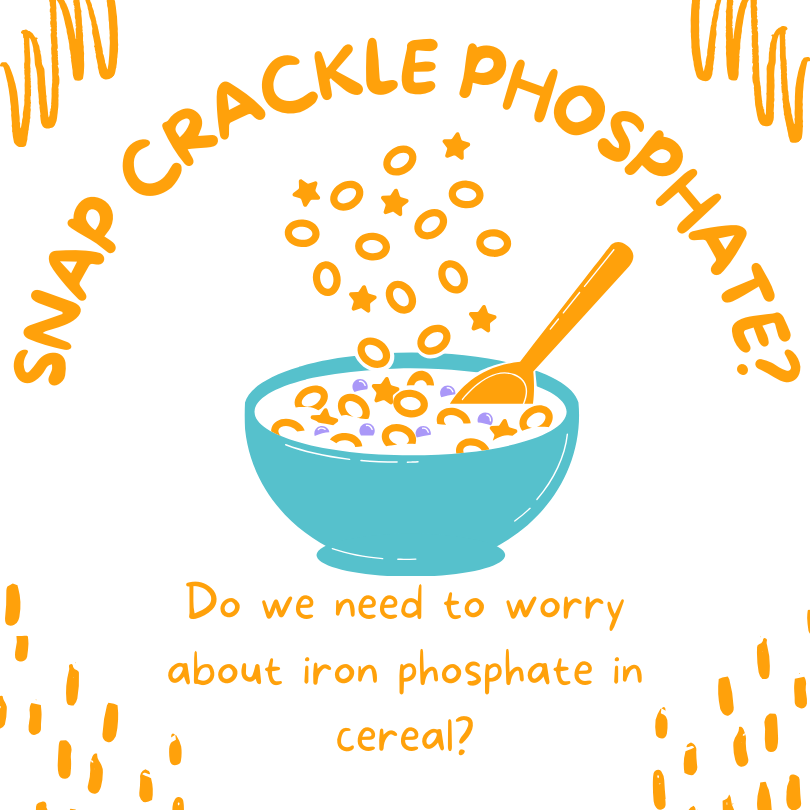Today I received an email about iron phosphate and rice krispies. The question was whether or not iron phosphate would be considered an additive of concern for hyperphosphatemia.
What do we know about iron phosphate?
Iron phosphate can be used as iron source for fortification. When I looked at this in my PhD iron phosphate it did come up as an additive of concern. You can find the reference for that here.
But, what I also found was that it depended on how much iron was being added to the foods. The more iron that was added, the more phosphorus there was. That makes sense.
Is there a way to tell how much phosphorus is added?
Yes! You can use the iron content listed on the label to figure out how much phosphorus might be added. This makes an assumption that all the iron from the product is what is added (works great if the food is naturally low in iron!).
So, Iron Phosphate, FePO4, has a total molecular weight of ~151g/mol (I used the periodic table to figure that out).
Of that, roughly 36% comes from the iron and 20% from the phosphorus.
So if you are able to reasonably make the assumption that all the iron is coming from iron phosphate, you can calculate how much phosphate is added by using this formula:
Step 1: mg of iron in the food / 0.36 = Total amount of iron phosphate in the product
Step 2: Total amount of iron phosphate in the product * 0.20 = amount of phosphorus in the product.
So do we need to worry about phosphate in rice krispies?
Not unless our patients eat ALOT of it. The amount of iron that is added to Rice Krispies is very low.
When I looked up Rice Krispies, the label said it contains 5.5mg of iron per 42g serving. Using the steps above we can calculate that:
5.5mg of iron / 0.36 = 15.28mg of total iron phosphate
15.28 * 0.20 = 3.05mg of phosphorus
So per serving, Rice Krispies will contain ~3mg of phosphorus, which I would consider to be a very low amount.



Thanks so much for this information. I just had a patient’s wife ask about the phosphate in Rice Krispies and I found your research.
So glad it has helped Theresa!
Thanks for this article!!!
What about the iron phosphate in the uncle Ben’s microwave 8.8oz long white rice pouches? It says there is 3.8mg of iron for the entire pouch so theoretically it would be even less than this am I correct?
Thats a really great question! And you can use the same steps to figure it out. When I looked up the nutrition information for this product at https://www.bensoriginal.com/products/ready-rice/bens-original-ready-rice-long-grain-white-rice, I saw that the product contains 2.1mg of iron in 140g, and it is fortified with iron phosphate. Since regular rice contains almost no iron naturally (according to the Canadian Nutrient File – it contains 0.24mg per 100g, when can assume that almost all of the iron in the Uncle Ben’s rice comes from the phosphate. Next I do those two quick calculations:
1) 2.1mg of iron * 0.36 = 5.83mg of iron phosphate has been added to the product
2) 5.83mg * 0.20 = 1.17mg of phosphates per 140g serving.
Depending on how much is eaten, I would describe this as a low amount!